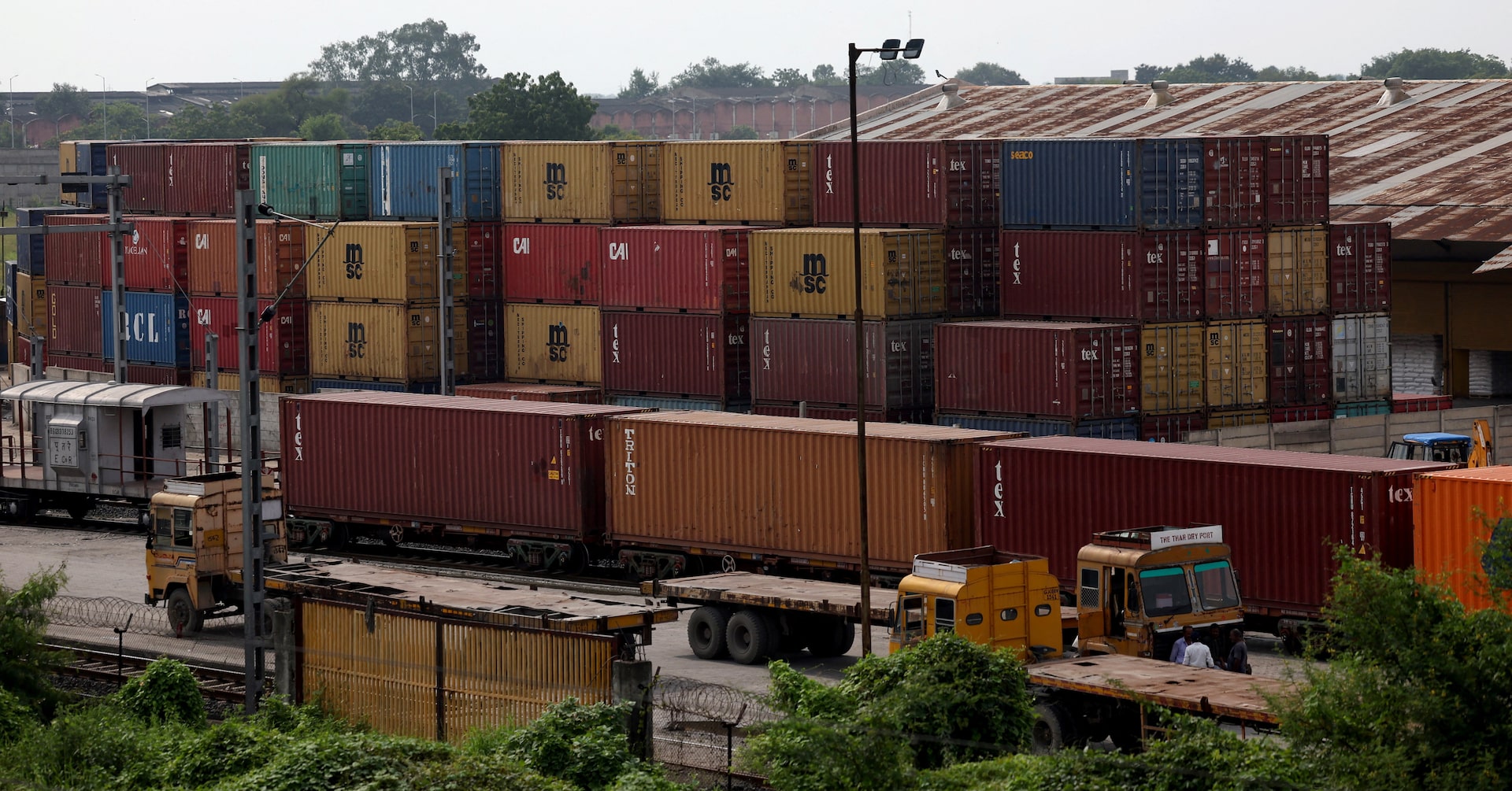NEW DELHI, Aug 29 (Reuters) – India’s economic expansion likely decelerated during the April-June period as subdued consumer spending in cities and sluggish private-sector investment constrained overall growth. Additional headwinds are expected in coming months due to the United States’ decision to double tariffs on Indian exports, affecting sectors such as textiles, footwear, chemicals, and food products.
On Wednesday, the U.S. raised levies on Indian goods to as much as 50%, citing India’s continued imports of Russian crude oil. Economists note this is among the harshest measures applied to any trading partner, placing India on par with Brazil in terms of tariff severity, and could negatively affect employment and economic momentum.
Despite these challenges, India continues to rank among the world’s fastest-growing large economies. The Reserve Bank of India forecasts annual growth near 6.5% and has stated that the tariff increases will have “minimal impact,” according to Governor Sanjay Malhotra. Official GDP figures for the first quarter of fiscal year 2025/26 will be released by the Ministry of Statistics on Friday at 1030 GMT.
Analysts suggest that favorable monsoon conditions, robust public expenditure, declining food prices, and accelerated shipments to the U.S. ahead of tariff implementation may have cushioned growth during the quarter. However, nominal GDP growth—reflecting both real output and inflation—is projected to dip to 8%, down from an average of nearly 11% over the past two years, according to JPMorgan estimates.
Inflation at the retail level dropped to 1.55% in July, marking an eight-year low. This sustained disinflation has likely constrained government revenue and corporate earnings. Data from the central bank revealed that year-on-year sales growth among 1,736 publicly listed manufacturing firms slowed to 5.3% in the June quarter, down from 6.6% in the prior period.
Some experts warn that if elevated U.S. tariffs persist, India’s export performance could weaken further, undermining its position as an alternative manufacturing destination to China. HSBC chief economist Pranjul Bhandari estimated that a one-year continuation of the higher duties could reduce GDP growth by 0.7 percentage points, with labor-intensive industries like textiles, food processing, and jewelry bearing the brunt.
In response, the Indian government has pledged assistance to affected sectors and plans to implement tax reductions on essential goods to stimulate domestic demand. The finance ministry’s latest economic review highlighted that cuts to the goods and services tax (GST) on basic items would lower household expenses and encourage consumption. Additionally, S&P Global’s recent credit rating upgrade may help reduce borrowing costs and attract foreign investment, supporting economic resilience.
— news from Reuters
— News Original —
India’s economy likely slowed in April-June ahead of US tariff blow
NEW DELHI, Aug 29 (Reuters) – India’s economy likely slowed in the April-June quarter as weak urban demand and slow private investment weighed on growth, with U.S. tariff hikes expected to hurt key exports including textiles, footwear, chemicals and food items in the quarters ahead. n nThe United States on Wednesday doubled its tariffs on Indian goods to as high as 50%, citing New Delhi’s buying of Russian oil – the most punishing rate among U.S. trading partners on a par with Brazil, in a move economists say could hurt growth and jobs. n nSign up here. n nEven at this pace, India remains one of the fastest-growing major economies. The central bank expects full-year growth to remain close to 6.5% and sees “minimal impact” from higher tariffs, its governor Sanjay Malhotra has said. n nThe Ministry of Statistics will release GDP data for April-June, the first quarter of fiscal 2025/26, on Friday at 1030 GMT. n nEconomists say a good monsoon, strong government spending, easing food inflation and front-loaded U.S. shipments likely supported growth in the quarter despite weak urban demand and slow private investment. n nEven as real GDP growth holds up, nominal GDP growth, which includes the impact of inflation, is expected to have softened to 8% after averaging almost 11% over the previous eight quarters, according to JPMorgan. n nRetail inflation eased to 1.55% in July, an eight-year low. n nLower nominal growth, driven by multi-year low inflation, is likely to have weighed on government tax revenues and corporate profits. n nAnnual sales growth of 1,736 listed private manufacturing firms eased to 5.3% in the June quarter, from 6.6% in the previous quarter, a report from the Reserve Bank of India, the central bank, showed earlier this week. n nSome economists fear prolonged higher U.S. tariffs could dent India ‘s growth further in the coming quarters as exports slow and limit the country ‘s appeal as an alternative manufacturing hub to China. n n”If it sticks for a year, GDP growth can slide by 0.7 percentage point, with much of the burden falling on labour-intensive sectors such as jewellery, textiles, and food items,” Pranjul Bhandari, chief economist at HSBC, said in a note on Thursday. n nThe government has pledged support for sectors hit by Washington ‘s tariffs and planned tax cuts to boost domestic consumption. n nIn its monthly economic report on Wednesday, the finance ministry said planned goods and services tax cuts on essentials would ease household costs and lift demand, while S&P Global ‘s recent ratings upgrade could lower borrowing costs, attract foreign capital and support growth. n nAdditional reporting by Nikunj Ohri; Editing by Hugh Lawson n nOur Standards: The Thomson Reuters Trust Principles., opens new tab n nManoj Kumar is a Senior Economics Correspondent based in New Delhi. He covers macroeconomy with a focus on India ‘s economic policies for manufacturing, trade and the rural economy. He has written on a broad range of topics including India ‘s annual budgets, taxation, inflation, youth unemployment, protests and the impact of government policies on people. Previously, he worked with the PTI news agency and The Tribune newspaper covering ministries of finance, commerce & industry, and petroleum besides parliament.
